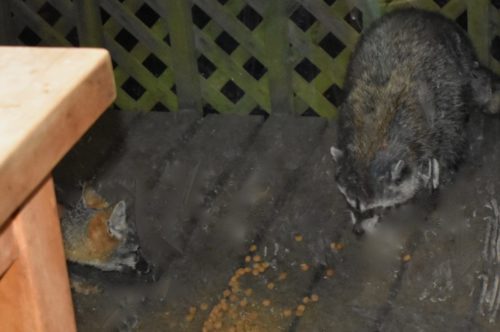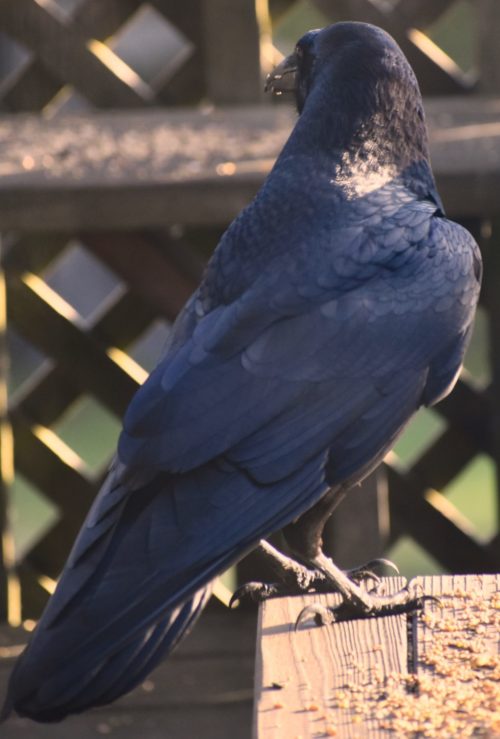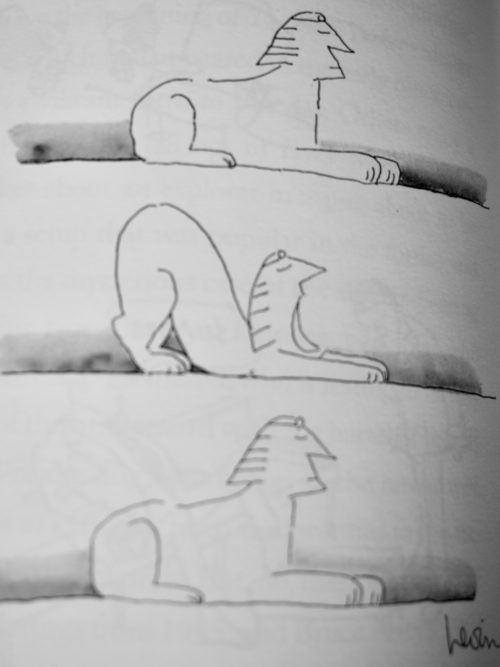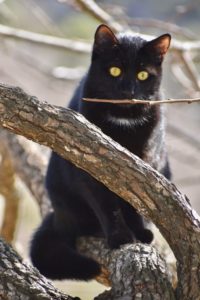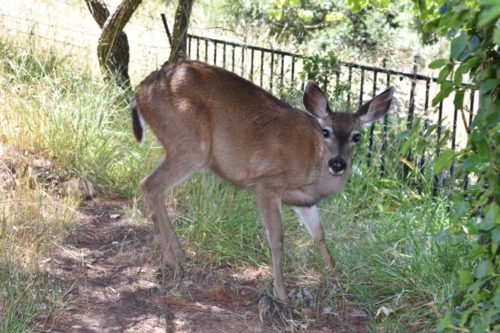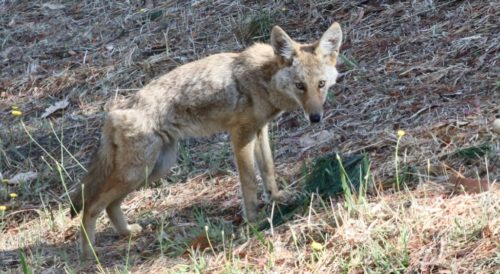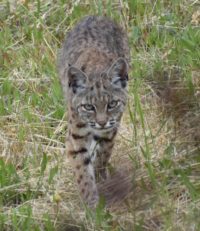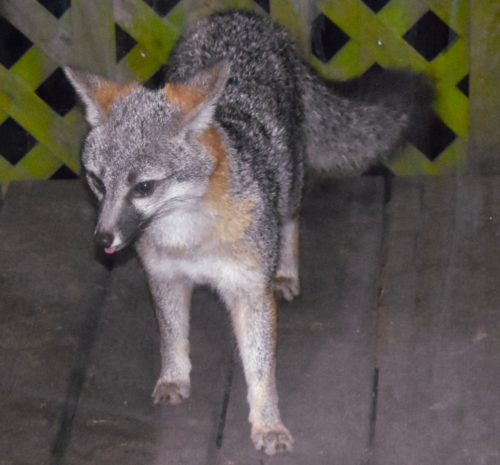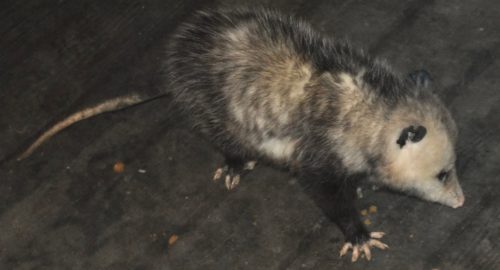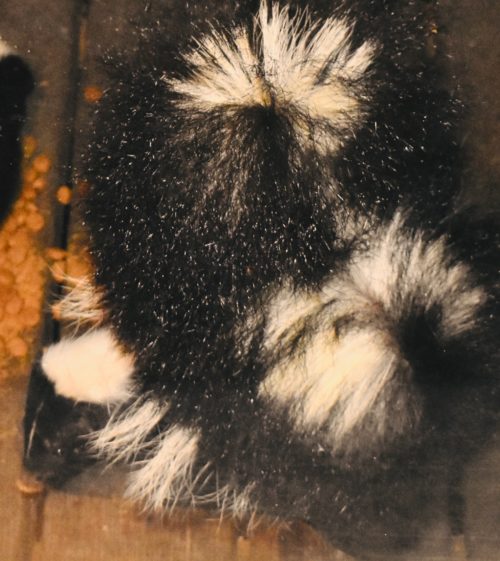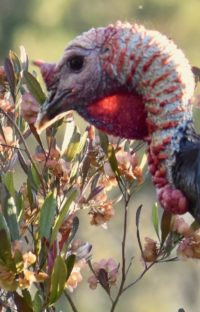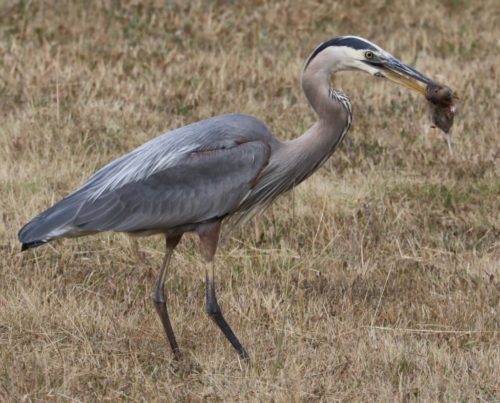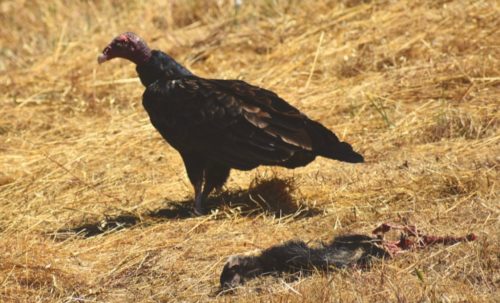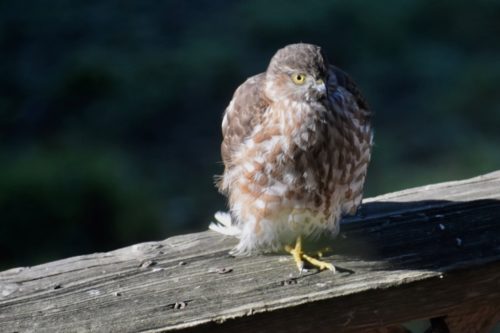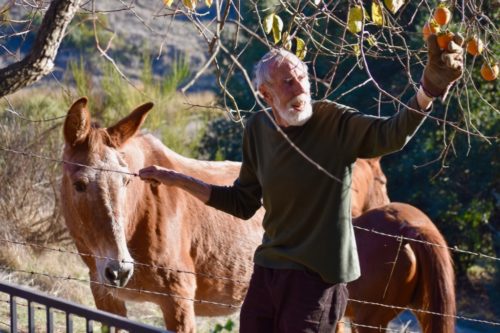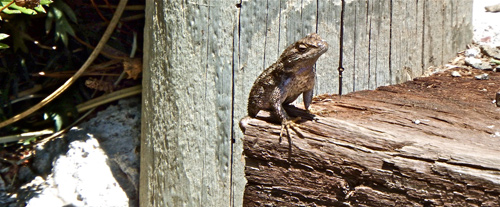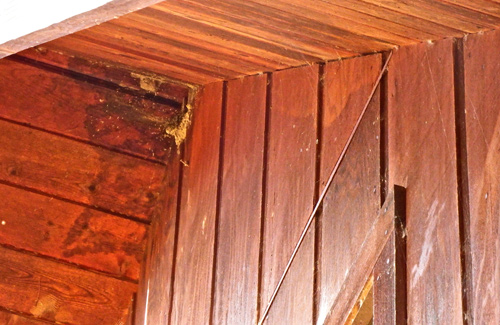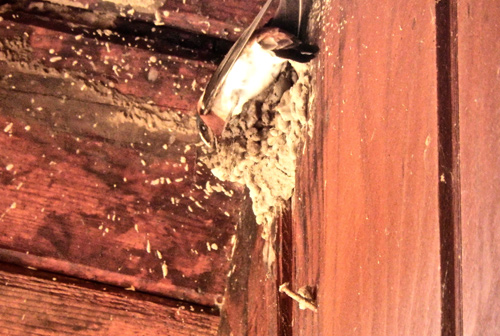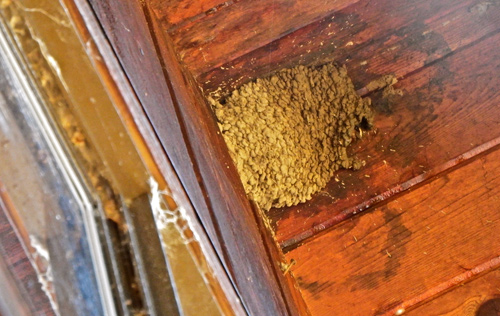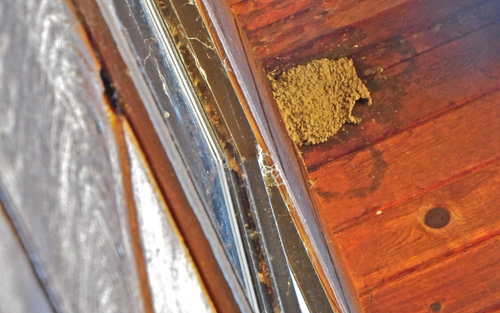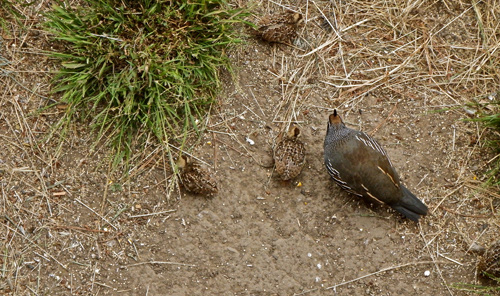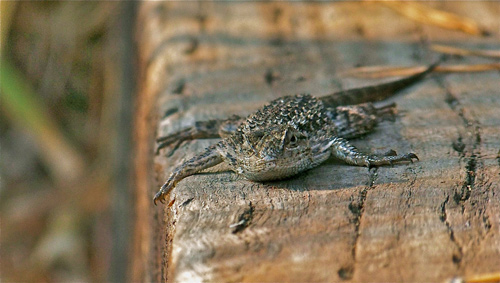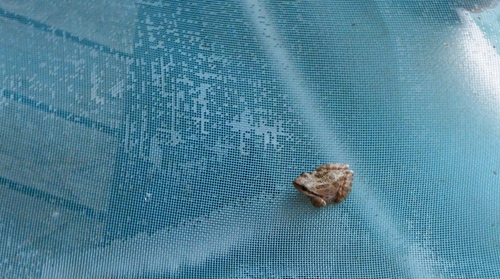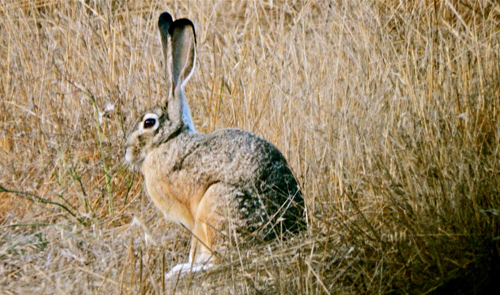Entries tagged with “Western fence lizard”.
Did you find what you wanted?
Wed 14 Apr 2021
Posted by DavidMitchell under Uncategorized
Comments Off on Croak and humor
Caveat lectorem: When readers submit comments, they are asked if they want to receive an email alert with a link to new postings on this blog. A number of people have said they do. Thank you. The link is created the moment a posting goes online. Readers who find their way here through that link can see an updated version by simply clicking on the headline above the posting.

____________________________

I unknowingly carried a Western Fence Lizard, which had been hiding in our woodpile, indoors on a log last week. Unfortunately, our fireplace cost the lizard its tail and ultimately its life.
After I added a log to the fire one night last week, I noticed something squirming near it in the gray ashes. I checked. It was a lizard, and after several tries with gloves on my fingers, I managed to flip it out of the fireplace onto the floor, along with one red ash that singed a small spot on the carpet.
This species of lizard is known as a Blue Belly or Western Fence lizard, and the Blue Belly I’d just removed from the fire appeared to be dead. No movement whatsoever even when I picked it up. Since its flesh wasn’t burned, I guessed the lizard had passed out from the heat. I carried the creature to our kitchen sink and ran cold water over it. After a minute or so, the lizard seemed to be trying to move its legs. However, it couldn’t move them very much, so I treated it to some more cold water, laid it down on the counter, and gently straightened out its legs. After that the Blue Belly took a few steps before passing out again.
With no other ideas for resuscitating the poor critter, I put its lifeless body beside a geranium in a flowerpot on the deck. When I checked back the next day, the wretched reptile hadn’t left.
______________________________

This vulpine-raccoonish ecumenical dinner was celebrated Sunday at Mitchell cabin’s kitchen door.
Raccoons show up at Mitchell cabin’s front and kitchen doors every evening begging for kibble, and we normally give them a few handfuls. Skunks and foxes occasionally show up to share their repast.
Elsewhere in Marin, foxes can be suspect. The Marin Humane Society awhile back had to put down a rabid fox near Novato. As for raccoons: “Although raccoons suffer from rabies more than any other mammal in the United States (about 35 percent of all animal rabies cases),” the national Humane Society reports, “only one human death from the raccoon strain of rabies has been recorded in the United States.”
_________________________________

A croaker on a bench at Mitchell cabin Wednesday.
An easy way to tell a raven from a crow is that ravens croak whereas crows caw. Easier yet, the tails of ravens are wedge shaped while the tails of crows are fan shaped. Easiest of all, only the ravens squawk, “Nevermore,” if you call out the name Lenore.
_______________________________

Fri 19 Feb 2021
Posted by DavidMitchell under Uncategorized
Comments Off on Looking animals in the eye
This week we’ll look animals, both domestic and wild, in the eye to get a sense of what they see.

Newy, the stray cat we’ve taken in and who has been mentioned here before, can have an intense gaze when she’s looking off at something. It’s noticeable enough that it prompted me to look into, so to speak, the eyes of not only cats but other animals as well. A cat’s vision is not as all-powerful as it appears. A cat is most sensitive to blues and yellows and does not see colors like red, orange, or brown.

A blacktail doe looks up from grazing outside our bedroom window. The pupils in a deer’s eyes are horizontal, not round, and a flash camera makes them look blue.

A coyote displays his predatory nature as he stares into a field. As it happens, just now as I type this, coyotes are howling outside Mitchell cabin. (Photo by neighbor Dan Huntsman)

The no-nonsense look of a bobcat in the field below Mitchell cabin.

Foxes too are predatory, but their gaze makes them appear more curious than vicious.

Possums have good night vision but don’t distinguish between colors very well. Overall, their vision is so weak they must depend on smell and touch to find food.

Skunks, like possums, have very poor vision and navigate largely via their senses of smell and hearing.

Wild turkeys, on the other hand, see in color and “have an excellent daytime vision that is three times better than a human’s eyesight and covers 270 degrees,” according to ‘Facts about Wild Turkeys.’ “They have poor vision at night, however, and generally become warier as it grows darker.”

‘Livingbird Magazine’ reports that “Great Blue Herons can hunt day and night thanks to a high percentage of rod-type photoreceptors in their eyes that improve their night vision.” Near Mitchell cabin, a gopher with the baleful stare of death hangs from the heron’s beak.

Buzzards have such “keen eyesight,” Seaworld claims, that “it is believed they are able to spot a three-foot carcass from four miles away on the open plains.”

A stern stare. Coopers Hawks are skillful hunters and like other hawks have excellent vision.

The smirk of a Western Fence Lizard (also known as a Blue Belly for obvious reasons). It’s one of the most common lizards around Mitchell cabin. As for their vision, most lizards have excellent eyesight, and some can see into the UV spectrum.

Somehow my work glove hand ended up on the persimmon, and my bare hand on the barbed-wire fence. (Photo by Lynn Axelrod Mitchell)
This moment became a test of my vision and not in looking at the persimmons growing between the fields of Mitchell cabin and Arabian Horse Adventures. After some staring, I concluded that the Arabian waiting patiently for a persimmon is, in fact, a female mule. Nonetheless, I eventually gave her some fruit. Later I found out the mule had arrived in the pasture not long ago after its owner died. So far I’ve never seen any of the stable’s trail riders on it. Arabian Mule Adventures.
Tags: animal eyesight, blacktail deer, blue belly, buzzards, Cooper's hawk, foxes, Great blue heron, jackrabbit, mule, possum, skunks, Western fence lizard
Sun 14 Jun 2015
Posted by DavidMitchell under West Marin nature, Wildlife
Comments Off on The Teddy Bear picnic and why to stay at home
If you go out in the woods today
You’re sure of a big surprise.
If you go out in the woods today
You’d better go in disguise.
For ev’ry bear that ever there was
Will gather there for certain, because
Today’s the day the teddy bears have their picnic.
Ev’ry teddy bear who’s been good
Is sure of a treat today.
There’s lots of marvelous things to eat
And wonderful games to play.
Beneath the trees where nobody sees
They’ll hide and seek as long as they please
Cause that’s the way the teddy bears have their picnic.
If you go down to the woods today
You’d better not go alone.
It’s lovely down in the woods today
But safer to stay at home.
Written by the Irish composer Jimmy Kennedy (1902-84), who also wrote Red Sails in the Sunset.

A Western fence lizard basking in the sun on my front steps last week. (Photo by Lynn Axelrod)
![]()
Male Western fence lizards do pushups to intimidate other males. In the process they reveal their blue undersides, which is why they’re sometimes called Blue-bellies.

A pair of Cliff swallows tried for three weeks to build a mud nest under the second-floor eaves of Mitchell cabin only to have the mud come loose from the wall and the nests come crashing down. Each collapse was disheartening for me and no doubt worse for the swallows. (Photo by Lynn Axelrod)

Finally a couple of swallows got a nest going, building it with pellets of mud from the nearby stockpond. A typical nest is made up of approximately 1,000 pellets, which represents 1,000 roundtrips to the stockpond. (Photo by Lynn Axelrod)

A week ago the swallows completed their nest. Stain on the bottom of the eaves shows where previous nests had been attempted. (Photo by Lynn Axelrod)

The female lays three to five eggs, and both parents take turns incubating them. The eggs typically hatch in 12 to 17 days. The young begin to fly when they’re 20 to 25 days old. The young live in or near the nest for a few days for their parents to feed them, and they remain in the area for several weeks. (Photo by Lynn Axelrod)

Rounding out this tour of nature around Mitchell cabin, a covey of quail hunt for birdseed that has blown off my deck and landed in the grass below. (Photo by Lynn Axelrod)
Mon 22 Sep 2014
The autumnal equinox of 2014 is upon us. Fall has begun. If we were in Great Britain, still including Scotland (hip, hip, hooray), we would probably say that “autumn” has begun. Transatlantic linguistic differences, you know, old chap. Sort of like “truck” v. “lorry.”
Until the early 1600s, the English name for the season was “harvest,” but as more and more people moved off the farm and into cities where there was no harvesting, they began to call the season “fall of the leaf.” After all, it’s the time of year when leaves fall from trees. Eventually, the phrase was shortened to just “fall.”
From what I read, the word “autumn” is at least three centuries older, but its origins are unclear. However, the French word for “autumn” is “automne,” so that may be a clue.

The cold-blooded countenance of a Western Fence Lizard.
The mostly dry, mostly sunny days of summer’s end were welcomed by a cold-blooded crew of Western Fence Lizards that daily warm themselves on the railroad-tie steps leading up to Mitchell cabin.
I’ve seen as many as three lizards at a time on the steps. Some scoot out of sight the moment they feel the vibration of my tread, but some don’t move at all, forcing me to be careful I don’t step on them. Actually, I don’t think that’s likely. Their staying still as long as possible is probably a form of camouflage they would abandon if I got too close.

The Western Fence Lizard diet mostly consists of insects and spiders.
Their nickname is “blue bellies” because of the color of their undersides, which can be seen when the males do pushups. It’s their equivalent of pumping iron in order to impress females and intimidate other males.

A Pacific tree frog right after I rescued it from my hot tub.
When I opened the lid of my hot tub Thursday to check the amount of chlorine and other chemicals in the water, a tree frog that had been hiding between the lid and the top of the tub took a flying leap into the caldron.
At 104 degrees, the water is hot enough to quickly kill a frog. I’ve seen it happen. This time, however, I had a sieve with me and was able to scoop the frog out in time to save it.

Autumnal raccoon kits begging at the kitchen door.
Three raccoon mothers and their kits show up immediately after sunset each evening to dine on whatever rations we’re willing to provide, slices of bread, corn chips, peanuts etc.
The kits are curious enough about the source of this bounty that they’ll sometimes take a step or two into the house when Lynn or I open a door to toss them their rations. However, most of the raccoons back away the moment we get close. The exception is one mother who sits beside the door and uses her front paws to unhurriedly take slices of bread directly from our hands.

Four wild turkeys uphill from Mitchell cabin.
It would be fun to be able to call them turkeys in the straw, but they’re really turkeys in the hay. Straw is basically grass with its seeds removed.

In 1988, a hunting club working with the State Department of Fish and Game introduced non-native turkeys into West Marin on Loma Alta Ridge, which overlooks the San Geronimo Valley. By now, however, there are far more turkeys than turkey hunters, and their flocks have spread throughout West Marin.

A turkey pauses to dine on grass seeds.

A jackrabbit likewise dines on grass uphill from Mitchell cabin.
Jackrabbits, which are also known as black-tailed hares, avoid predators by using “an element of surprise and escape that works well,” Point Reyes Station naturalist Jules Evens notes in his Natural History of the Point Reyes Peninsula.
“When a potential predator is detected, the hare will usually take shelter in the shade of a convenient clump of vegetation or behind a rock and freeze motionless. If the predator approaches very closely, the hare leaps into stride, zigzagging across open country until it finds shelter.

Jackrabbits have been clocked running at up to 36 mph for short distances.
“The effect on the startled predator is momentary confusion, which may afford the hare the advantage it needs to escape.” Their smaller cousins, the cottontail rabbits, prefer brush to open land. They have “poor running ability,” Evens explains, and “frequently fall prey to foxes, bobcats, weasels, hawks, and owls.”

A four-point buck, probably about a year and a half old, also forages in the grass uphill from Mitchell cabin.
Columbian blacktail deer (Odocoileus hemionus columbianus) are the subspecies of blacktails native to the Bay Area,” Bruce Morris writes for Bay Nature. “According to the California Department of Fish and Game, there are now approximately 560,000 deer in all California, about 320,000 of which are Columbian blacktails….
“Blacktails have a typical lifespan in the wild of seven to 10 years, but they can survive in suburban habitat for as long as 17 to 20 years if unmolested,” Morris adds. “Suburban deer have minuscule home ranges, measuring three or four blocks for females whereas wild deer inhabit territories that extend for several miles.”
The other day I was walking up the front steps when I was so startled to see a deer right in front of me that I tripped and started to fall forward. Fortunately, I was able to catch myself and spring back, so I didn’t land on my nose. I’ll try to remember that sequence on Nov. 2 when daylight savings time ends and I have to reset the clocks.
Tue 8 Jan 2013
From a butterfly to a pair of badgers, from a newt and a salamander to a bobcat and a coyote, this posting is a collection of some of my favorites from among the photos I’ve taken of wildlife around Mitchell cabin.

A Buckeye butterfly atop a chrysanthemum on my deck.

Closeup of an amphibian, an arboreal salamander.

Lying low, another amphibian.
A Pacific tree frog’s color depends on where it is at the moment. Unlike chameleons, whose colors change to match background colors, tree frogs’ colors change (between brown and green) depending on how dry or moist their surroundings are.

A poisonous amphibian.
The skin of a California newt such as this secretes a neurotoxin, tetrodotoxin, that is hundreds of times more toxic than cyanide.

A macho reptile.
Male Western fence lizards do pushups to intimidate other males. In the process they reveal their blue undersides, which is why they’re sometimes called Blue-bellies.

A colorful but seldom seen reptile.
I found this Pacific ring-necked snake in a rotten log while splitting firewood. The snake eats very small creatures, tadpoles, insects, and especially salamanders. It has just enough venom to immobilize them but is not dangerous to humans.

A beady-eyed garter snake warms itself in the sun on my driveway.
Garter snakes are the most-common genus of reptile in North America. Although they are venomous, their venom is too mild to harm humans. However, when they’re disturbed, garter snakes emit a foul-smelling secretion from a gland near their anus.
Common garter snakes come in innumerable variations and are found in fields, forests and wetlands nationwide. Like this snake, adults average about four feet in length. In West Marin, their diet typically consists of tadpoles, slugs, and earthworms. But unlike other snakes, they don’t eat insects. When first born, the snakes are prey for bullfrogs. Hawks and foxes eat adults.

Gopher snakes are non-venomous although they don’t want you to know it.
“When disturbed, the gopher snake will rise to a striking position, flatten its head into a triangular shape, hiss loudly and shake its tail at the intruder,” the Arizona-Sonora Desert Museum website notes. “These defensive behaviors, along with its body markings, frequently cause the gopher snake to be mistaken for a rattlesnake.”

Golden-crowned sparrow disguised as a stained-glass window.

Heading for a drink at the birdbath on Mitchell cabin’s deck, a crow hops over a second crow, which stays put at their birdseed buffet.

A great blue heron hunting gophers in my field.

Chipmunks visit Mitchell cabin only occasionally, so I felt lucky to snap this photo of one.

A Western gray squirrel as seen from my bedroom window.
Every morning the ground around Mitchell cabin is littered with the freshly cut tips of pine branches because of this squirrel and his clan. Squirrels like to feed on pine trees’ cambium layer, which is immediately under the bark, and in the process they gnaw off twigs.

Trying not to be noticed.
West Marin’s large jackrabbits, which some people call black-tailed hares, are often seen in the late afternoon and evening around Mitchell cabin. To avoid catching the eye of predators, jackrabbits typically sit motionless unless the danger comes too close. Then they suddenly spring away, making sharp, evasive turns as they flee.

A gray fox on Mitchell cabin’s deck.

Young raccoons retreat to a tree when they feel threatened by other animals.

A blacktail doe nurses one of her two fawns.

Relying on its spots for camouflage, a newly born fawn tries to be invisible in tall grass by lying absolutely motionless even though I was leaning over it to take a photo.

A buck and two fawns bounding across tractor-mowed grass.

A mother badger and her cub sun themselves on the mound of dirt around their burrow (known as a “sett”).

A bobcat hunting outside my kitchen window.

A coyote heads for cover in, appropriately enough, a patch of coyote brush.

Besides photographing the wildlife around Mitchell cabin, I also enjoy having a bit of fun with it. My posting about encouraging a bodhisattva possum on her path to spiritual enlightenment has proven to be one of the best-read I’ve ever put online.

I take each species’ disposition into account when determining what it is best suited to learn. Raccoons, as you might guess, are natural bartenders.
 The biggest challenge I’ve faced in training wildlife has been convincing different species to get along with each other.
The biggest challenge I’ve faced in training wildlife has been convincing different species to get along with each other.
I felt a bit like a miracle worker when I finally got a possum, a fox, and a raccoon, none of which traditionally like each other, to dine nose to nose just outside my kitchen door.
I did it by setting out well-separated handfuls of peanuts for them and over time moving the handfuls closer and closer together. Now why can’t diplomats do that in the Middle East?
Tags: arboreal salamander, badgers, blacktail deer, bobcat, Buckeye butterfly, California newt, chipmunk, coyote, crows, garter snake, Golden-crowned sparrow, gopher snake, Great blue heron, grey fox, jackrabbit, Pacific ring-necked snake, Pacific tree frog, possum, raccoons, Western fence lizard, Western gray squirrel


